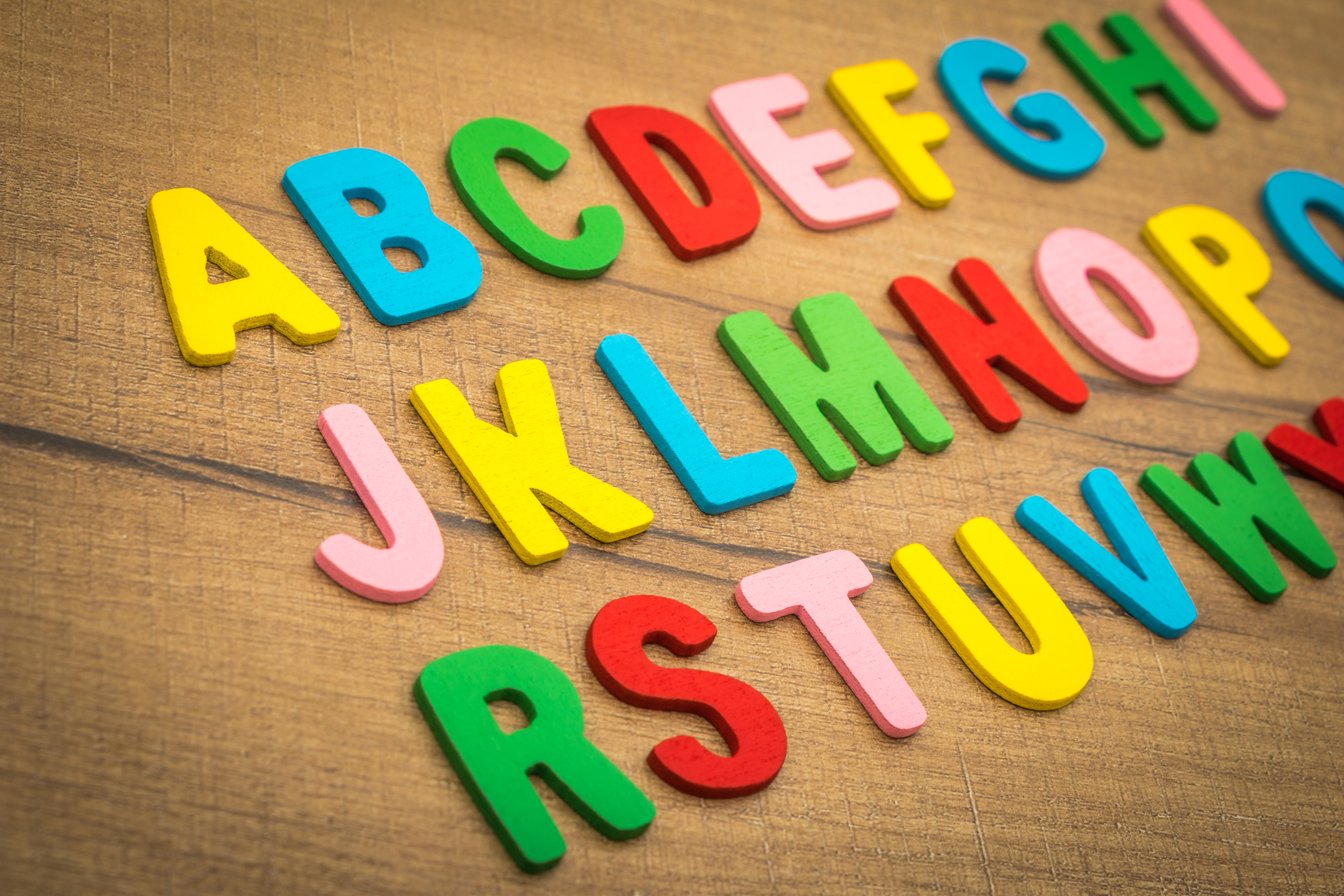A, B, C, D, E, F, G – makes you want to hum the alphabet song. But there’s no real reason why people should learn these letters in this order. There are plenty of ways we could structure the alphabet; the computer keyboard in front of me provides one alternative. Plenty of other alphabets exist too, as well as languages that don’t use alphabets at all.

So why did we end up with this one – and who’s responsible for it?
As a historian, I love “why” questions. I often like them a lot more than “who” questions, because it’s actually really rare for a single person to change the world. Instead, most of history’s biggest innovations come from teamwork, collaboration and groups figuring out how to make life better, easier and more fun.
What is a letter?
The alphabet is a perfect example of this process. Our ABCs, known as the Latin alphabet, are the result of millions of people over thousands of years slowly working together and ultimately agreeing on which letters to use and under what circumstances.
To figure out why they settled on the version we have today, you first need to understand what a letter is and what an alphabet is. Then, you can trace your way back to the very first examples of both.
Letters are symbols, just like emojis or crosswalk signs. Letters are shapes that we – the users – associate with a sound in a particular language.
But many letters change sound completely when they appear in a different language. The English “H,” for example, makes a “ha” sound, but the same symbol “H” is pronounced as “en” in Russian; in the Cyrillic alphabet, “H” makes a “n” sound.
Even when the shape and sound of a letter stay the same within a single language, the letters themselves can have different names. In America, “Z” is called “zee,” while in Canada, the United Kingdom and pretty much every other English-speaking country, it is called “zed.”
All this variety is possible because letters, like languages, evolve and change over time based on what local people do out of habit or trend or just for the fun of it.
What is an alphabet?
An alphabet is a collection of letter-symbols that have been more or less standardized, and which often – though not always – reflect all of the sounds made in a particular language.
Some languages, like Chinese, don’t have alphabets at all, using symbols to represent whole words. Others, like Cherokee, use symbols that represent syllables.
The first alphabet was invented in ancient Egypt, more than 5,000 years ago, and was developed to record religious texts. That’s where its name “hieroglyphs,” or “sacred carvings,” comes from.
Hieroglyphs are beautiful and they do a good job recording prayers, but they are difficult to write quickly, because they are so detailed and often take the form of animals, people or day-to-day objects. Over time, people developed simplified forms of each glyph so they could take notes and write informally.
While hieroglyphs were mostly used by priests and elites, common people, including travelers and traders from other places, learned informal writing. These visitors realized the Egyptians had developed something useful – a way to record sales or send letters that would be clear to those who could read it but mysterious to everyone else. Many people never learned to read at all, because they did not need to or because they were denied access to education.
Vowels, consonants and the letter ‘J’
The most important traders in this period were from Phoenicia – known today as Syria, Lebanon and Israel – and they spread the alphabet to the towns and villages that surrounded the Mediterranean Sea.
The Phoenicians established alphabetical order to make it easier to learn and share with others. But the Phoenicians and Egyptians used only consonants; eventually, as people began to write more and more, and more words needed to be created to describe different things, the Greeks adopted vowels.
The Greek alphabet looks a lot like ours, but our letters took their final form in Italy. First the Etruscan people, and then the Romans, adapted Greek letters to fit their language. The Romans spread their language, Latin, and its alphabet all over modern Europe, the Near East and North Africa. The earliest example of the Latin alphabet in use is called the duenos inscription and comes from the sixth century BCE, 2,500 years ago.
Even then, the alphabet was still incomplete, because Latin didn’t have all the sounds that are common today. The most obvious is the letter “J”; even though the first month of the Roman calendar was January, it was written with an “I,” “ianuarius,” and pronounced with a “ya” sound. The “J” came into use during the Renaissance – during the 1500s in Europe – two or three centuries after the “W” was added, during the Middle Ages.
And there’s no reason to think the alphabet might not change again. English, especially, has a habit of borrowing words from other languages, like karaoke from Japanese, cookie from Dutch and avatar from Sanskrit. Maybe, because of this borrowing, we might eventually need to add new symbols to our alphabet. In short, as the world grows more connected, the alphabet may have to adapt. It won’t be the first time.
Joel Abrams | Manager of Outreach







